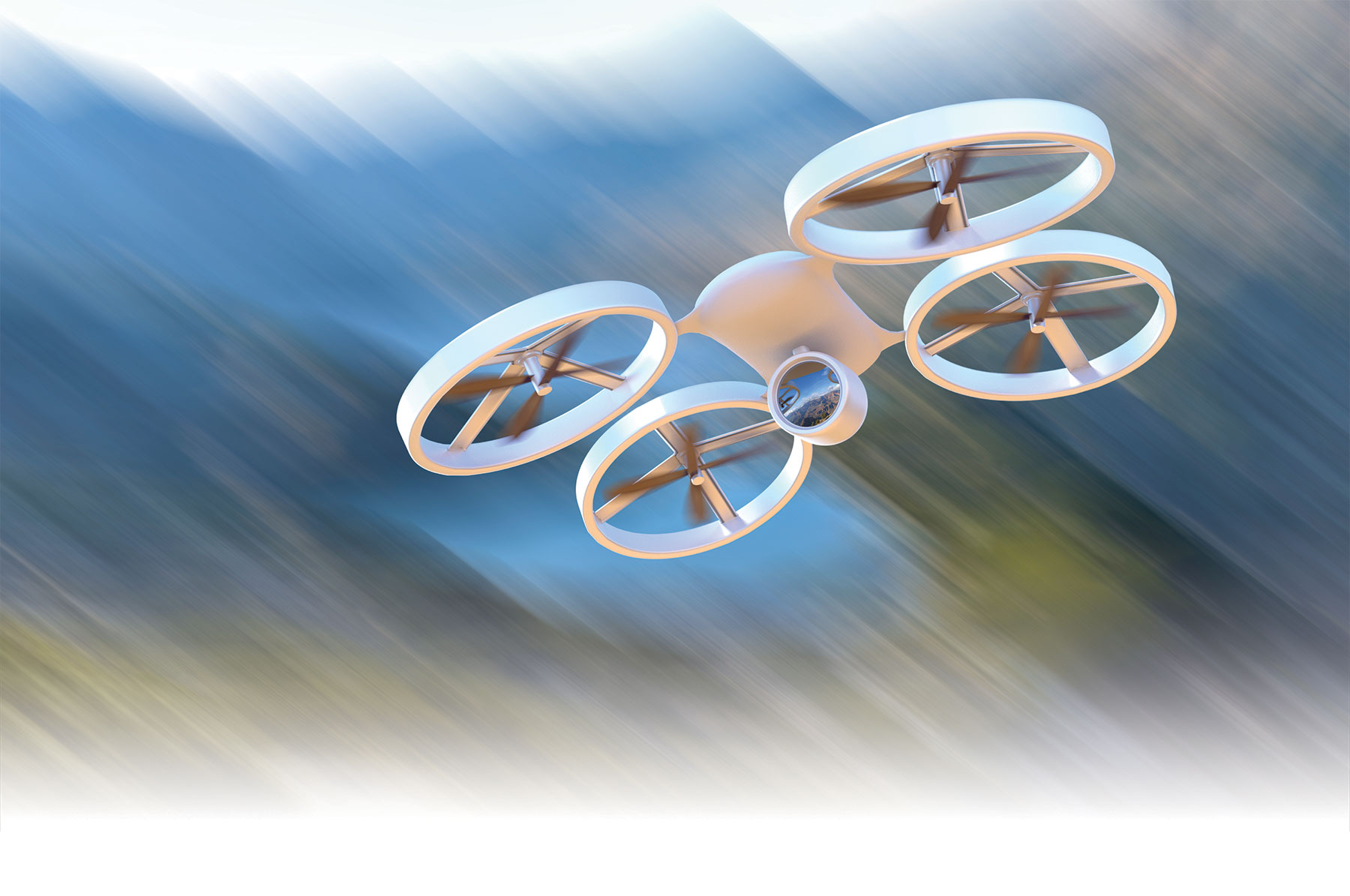
Drones & Privacy Rights
By: Lamar H. Ellis, III, MAI, SRA
We live in a world of sophisticated spy tools. The main issues that always come up are concerns about personal privacy and private property rights. As drones, unmanned aerial vehicles, become more commonplace in society the issues of privacy are being addressed. Drones are loud and can be seen and that scares some people. However, cell phones are far more intrusive of personal privacy. Cellphones have GPS, cameras, microphones and the ability to connect to the internet. Companies like Google now track search information so that ads can be specifically targeted toward individuals and the National Security Agency has a mass collection of telephone metadata records. Drones are the new technology and therefore they are subject to more scrutiny when it comes to privacy.
The US Constitution grants its citizens many rights, but as technology changes, people are becoming more accustomed to giving up their rights of privacy. The Fourth Amendment protects Americans from illegal search and seizure, however, cell phones, the internet, and drones are presenting new judicial challenges to privacy. Not only that, but privacy advocates have also chosen to capitalize on the public interest and attention associated with the demonization of drone technology. The fact is that drones operate in airspace which is currently being subjected to new proposed case law and statutes.
In Section 332 of the Federal Aviation Administration Modernization and Reform Act (FNMA) of 2012, Congress required the FAA to develop a comprehensive plan for the integration of drones into the National Airspace (NAS). The FAA addressed the safe and efficient integration of drones into the national airspace but did not include any privacy provisions in its guidelines. In an attempt to fill this void, the individual states and local municipalities are beginning to address privacy and trespass concerns. Even though the initial laws are expected to have inconsistent enforcement and legal uncertainties, the general consensus is that through experimentation the right balance will be found between the rights in the sky and the rights to privacy.
The main issue in regards to drones is “what is publicly navigable airspace for drones?” Navigable airspace has been defined for aircraft and helicopters. Airplanes, for example, have a minimum flight altitude of 1,000 feet over congested areas or open air assemblies of persons and 500 feet in uncongested areas. It has yet to be determined the public highway in which a landowner cannot exclude a drone from flying over their property. Under current regulations, a drone can only operate up to an altitude of 400 feet above the ground or above a structure. The gray area is that 400 feet zone above a homeowner’s property. Future drone cases are expected to be argued on the federal level will address navigable airspace.
As of January 2017, 31 States had passed privacy laws concerning drones. Most of the rulings have limited the use of drones in private spaces, backyards, crowds, government infrastructure and government buildings. It is essential to a drone operator to investigate and understand the rules in the states and municipalities that they are flying in. Currently, the best way to ensure that there is not a problem with flying a drone over someone’s property is to alert them that you are flying a drone in the area. Uninformed people are typically the most concerned people. Be sure to attempt to let everyone who might be affected by a drone operation know what the operation is (i.e. real estate listing, roof inspection, survey, etc.). Also, make sure that permission is obtained from someone authorized to give permission.
Regardless of privacy infringement, drones are here to stay. In just a short period, drones have become a valuable tool in residential, commercial and industrial industries. They give access to hard to reach places, can point out problems while they are still small, can cover a large amount of property in a shorter time period, are relatively inexpensive to use, and can contribute to a safe working environment.
Once drones become more commonplace, infringement on privacy will not be as big of an issue. The questions of privacy infringement and private property infringement will probably lag in the lower courts for years. The issues will become law only after litigation goes all the way to the Supreme Court. So, before you decide to use a drone in your business model, it’s important that you consider the current federal, state and municipal laws surrounding drone usage. Companies that make safety and privacy their number one priority will be able to navigate the rules and regulations more successfully than their competition.
About DroneNOIR, LLC and Lamar Ellis
Lamar H. Ellis, III is the CEO of DroneNOIR, LLC. He is from Atlanta, Georgia and holds the prestigious MAI and SRA designations with the Appraisal Institute along with a Remote Pilot Certificate for commercial drone operations. He is an approved instructor with the Appraisal Institute and provides consultation for Drone companies all over the United States for risk mitigation and compliance. Along with being a published author he also presents seminars across the United States on the impact of the drone industry.
Article by Lamar H. Ellis, III, MAI, SRA, Remote UAS Pilot with DroneNOIR, LLC. DroneNOIR, LLC provides the most current information and resources to the real estate industry on the utilization of drones.
Privacy Rights and Drones -The Federal Aviation Administration has been charged with making the skies safe but what about privacy invasion.
